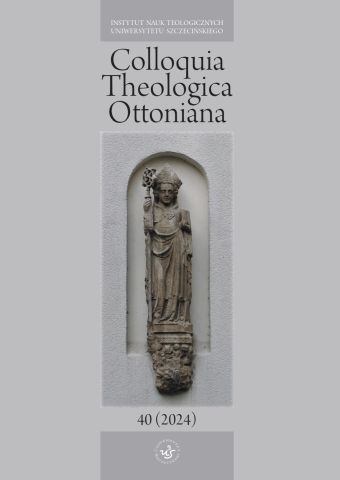Lęk jako stan i cecha u osób praktykujących kult miłosierdzia Bożego
Anxiety as a State and Personality Trait in People Practising the Cult of the Divine Mercy
Author(s): Sławomir BukalskiSubject(s): Christian Theology and Religion, Theology and Religion, Psychology of Religion
Published by: Wydawnictwo Naukowe Uniwersytetu Szczecińskiego
Keywords: trait anxiety; state anxiety; religiousness; the Divine Mercy
Summary/Abstract: The theoretical part of the article presents reflections on religiosity marked by God’s mercy and on the issue of anxiety. Anxiety as a state and as a personality trait refers to the concept presented by Charles D. Spielberger. Religiosity is presented from the perspective of Stefan Huber. In its psychological aspect, the cult of the Divine Mercy appears as a form of religiosity that takes into account the cognitive, emotional and behavioural spheres of man. The modified Religiosity Centrality Scale is used to examine religiosity characterized by God’s mercy, while state anxiety and trait anxiety are measured with the State-Trait Anxiety Inventory. The study group consists of 175 people practicing the cult of the Divine Mercy (individually and in religious groups): 80 males (46% of the study group) and 95 females (54% of the study group). All of the correlations are negative ones. In males, state anxiety correlates with religious experience, while in females it correlates with prayer and religious experience. State anxiety, among younger participants, correlates with religious belief, religious experience, prayer and the overall score. In males, trait anxiety only correlates with religious belief. In females, trait anxiety correlates with religious belief, prayer, religious experience, participation and the overall religiosity score. In younger participants, trait anxiety appears together with religious belief, religious experience, participation and the overall religiosity score. In older participants, trait anxiety exhibits a connection with religious experience, religious belief and the overall religiosity score. The key pastoral conclusion is that practicing religiosity marked by the Divine mercy is beneficial in minimalizing various anxieties regarding God’s forgiveness, conversion, making key decisions or dying and death. Connecting faith and mind is more beneficial in pastoral activity than connecting faith and emotions, especially in people for whom anxiety appears to be an important personality trait. Focusing on the denotations of religious terms (the Divine Mercy) rather than on their connotation is an important challenge in shaping mature religiosity. This strategy is more effective in minimalizing anxiety-inducing situations but also trait anxiety.
Journal: Colloquia Theologica Ottoniana
- Issue Year: 2024
- Issue No: 40
- Page Range: 211-234
- Page Count: 24
- Language: Polish

